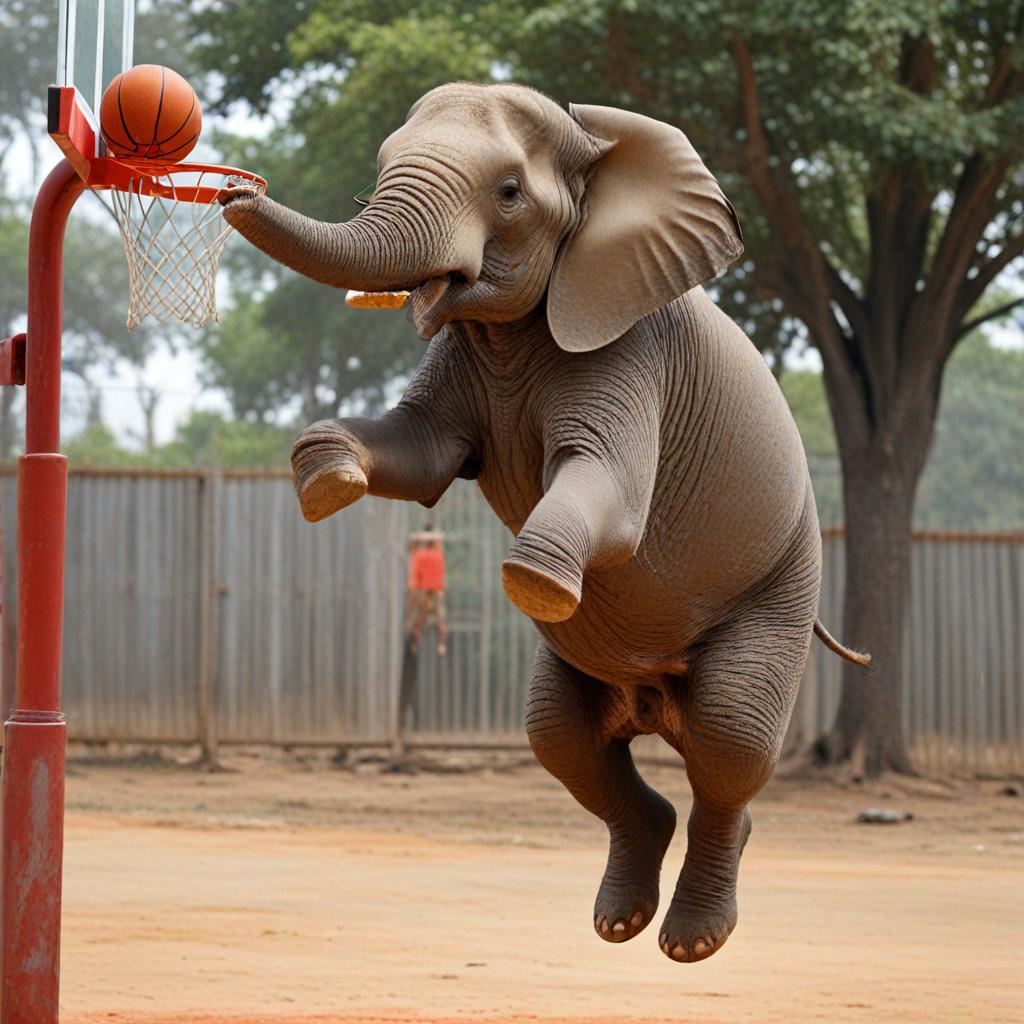
Elephants can’t jump because they are massive creatures and doing so would seriously compromise their legs. As strong as their legs are built, jumping and landing with such a massive load could or would break something internally. Their bones and joints are simply not designed for such stress.
Elephants on average weigh around 4 tons. Imagine that amount of weight coming down on four slender legs—it’s a recipe for disaster.
And another thing: elephants may seem flat-footed but did you know that they are actually tip-toeing the entire time? Like giant oversized ballerinas across the Savannah or in the forest. They have a large pad of cartilage under each heel which acts like a shock absorber and allows them to walk so quietly.
This adaptation is crucial for their survival in the wild, helping them move silently through their habitat and avoid detection by predators and humans.
Imagine what that would be like to live in a world where something as massive as an elephant can jump. We’d be experiencing constant seismic activity if we lived near them and there’d be no way to keep an elephant in the zoo safely.
Every leap would send shockwaves through the ground, potentially causing structural damage to buildings and infrastructure. And think about the enclosures in zoos—how high would the fences need to be to contain a jumping elephant? It’s almost unimaginable.
And elephants, with their massive size and additional range (thanks to their trunks) would be unstoppable if they also had the ability to jump. Not that they’re not with their massive size. An elephant, if it puts its mind to it, can break through anything.
Their trunks, which are incredibly versatile and strong, can lift objects weighing up to 600 pounds, and their tusks can easily topple trees. So, while they don’t need to jump to be powerful, the thought of them having that ability adds another layer of awe to these majestic creatures.
So yeah, elephants can’t jump. And that’s a good thing. It’s one of the many unique characteristics that make elephants so fascinating. They have evolved to be perfectly suited to their environment without the need for jumping.
Their impressive strength, intelligence, and social structures are more than enough to command our respect and admiration.
Elephants aren’t the Only Mammals that Can’t Jump
Oh, and don’t believe the rumor that’s going around that they’re the only mammals that can’t jump. Dugongs and manatees can’t jump either. These gentle sea creatures spend their lives gliding through water, far removed from the need to leap into the air.
I bet the sloth, as slow as it is, can’t jump as well.
Did You Know?
And speaking of the animal kingdom’s quirks, did you know that a group of flamingos is called a “flamboyance”? Or that kangaroos can’t walk backward? Nature is full of fascinating surprises and unique adaptations that continue to amaze us.
For instance, the cheetah, known for its incredible speed, has non-retractable claws that provide better grip when running. Or consider the platypus, which is one of the few mammals that lays eggs.
The diversity and complexity of animal life are truly astounding. Every species has its own set of adaptations that help it survive and thrive in its environment. These differences are what make studying the natural world so endlessly fascinating. There’s always something new to learn and marvel at.
For more animal factoids or for suggestions/reactions/comments or to simply reach out, you can also reach us through Instagram, Facebook, and email.
http://www.instagram.com/hayopetc



1 thought on “Did You Know that Elephants Can’t Jump?”